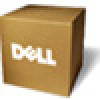Dell PowerConnect B-RX BigIron RX Installation Guide - Page 204
Usage considerations, Preparing the configuration file
 |
View all Dell PowerConnect B-RX manuals
Add to My Manuals
Save this manual to your list of manuals |
Page 204 highlights
7 Dynamic configuration loading Usage considerations • Use this feature only to load configuration information that does not require a software reload to take effect. For example, you cannot use this feature to change statically configured memory (system-max command). • Do not load port configuration information for secondary ports in a trunk group. Since all ports in a trunk group use the port configuration settings of the primary port in the group, the software cannot implement the changes to the secondary port. Preparing the configuration file A configuration file that you create must follow the same syntax rules as the startup-config file the device creates. • The configuration file is a script containing CLI configuration commands. The CLI reacts to each command entered from the file in the same way the CLI reacts to the command if you enter it. For example, if the command results in an error message or a change to the CLI configuration level, the software responds by displaying the message or changing the CLI level. • The software retains the running-config that is currently on the device, and changes the running-config only by adding new commands from the configuration file. If the running config already contains a command that is also in the configuration file you are loading, the CLI rejects the new command as a duplicate and displays an error message. For example, if the running-config already contains a command that configures ACL 1, the software rejects ACL 1 in the configuration file, and displays a message that ACL 1 is already configured. • The file can contain global CONFIG commands or configuration commands for interfaces, routing protocols, and so on. You cannot enter User EXEC or Privileged EXEC commands. • The default CLI configuration level in a configuration file is the global CONFIG level. Thus, the first command in the file must be a global CONFIG command or " ! ". The ! (exclamation point) character means "return to the global CONFIG level". NOTE You can enter text following " ! " as a comment. However, the " ! " is not a comment marker. It returns the CLI to the global configuration level. NOTE The CLI changes to the global CONFIG level if you load the configuration as a startup-config file instead of the running-config (using the copy tftp startup-config command or ncopy tftp startup-config command). NOTE If you copy-and-paste a configuration into a management session, the CLI ignores the " ! " instead of changing the CLI to the global CONFIG level. As a result, you might get different results if you copy-and-paste a configuration instead of loading the configuration using TFTP. • Make sure you enter each command at the correct CLI level. Since some commands have identical forms at both the global CONFIG level and individual configuration levels, if the CLI's response to the configuration file results in the CLI entering a configuration level you did not intend, then you can get unexpected results. For example, if a trunk group is active on the device, and the configuration file contains a command to disable STP on one of the secondary ports in the trunk group, the CLI rejects the 192 BigIron RX Installation Guide 53-1001811-01















